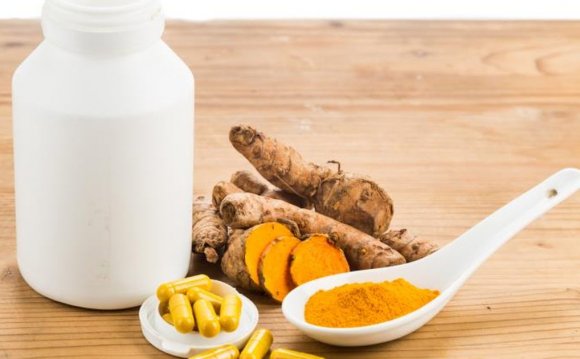
Ayurveda recommends internal cleansing at every change of seasons. Detox is considered especially beneficial in the spring, because that is the time all of nature is rejuvenating itself. In this special newsletter, an expert from The Council of Maharishi Ayurveda Physicians discusses ayurvedic cleansing and how to detoxify safely.
Q: Safety is a major consideration in all Maharishi Ayurveda detox programs. Can you talk about the need for taking precautions when you detoxify?
A: Certainly. Whatever treatment we recommend in Maharishi Ayurveda, whether it's for purification or for treating an imbalance, we always follow the rule of balance first. This is a principle that is made clear by Charaka, one of the great ayurvedic healers of ancient times. The principle is that the physician should never create a new imbalance in order to repair or fix an imbalance. Whatever herbs we use, whatever purification methods we employ, we should never risk disturbing the doshas (mind/body operating principles) further. Nor do we create an imbalance in the quality and quantity of the dhatus (body tissues) or the quality, quantity and flow of the malas (body wastes). It's also essential that any detox program support the health of the shrotas, the large and small channels that provide the path for toxins to leave the body, so that embedded impurities, once loosened by the purification program, can be flushed out of the body completely and quickly.
The perfect treatment doesn't balance one part of the body at the risk of imbalancing another part. This is the perfection of Maharishi Ayurveda. In following this principle, the detoxification methods of Maharishi Ayurveda flush out the toxins gently without disturbing the body's own natural functioning.
Maharishi Ayurveda recommends two kinds of detoxification programs: self-detox (including diet, herbal preparations, and daily routine) and a detoxification program supervised by an expert trained in Maharishi Ayurveda. While everyone can benefit from a supervised program such as Maharishi Panchakarma, not everyone should embark on a self-detox program. Which program you choose depends on the nature of your imbalances and the type of toxins lodged in your body.
Q: To begin with, can you tell our readers about the different types of toxins that we have to deal with and where they originate?
A: There are three different types of toxins that can impact the physiology: ama, amavisha and garvisha. Ama is the most common type of toxin, and is the waste product of incomplete digestion. Sticky, white and foul-smelling, it forms in the digestive tract when the food you eat is not digested properly. Ama is usually caused by eating foods unsuitable for your body type or the season; by eating too much or too little; by eating before the previous meal is digested; by going to sleep on a full stomach; or by eating foods that are left over, processed, old or fermented. If ama continues to be produced over a long period of time, it can leave the digestive tract, travel to a weak area elsewhere in the body and settle there. Usually it blocks the shrotas (microcirculatory channels) and disrupts the flow of nutrients to the area as well as the body's natural waste removal systems.
Usually ama develops when agni, the digestive fire, is either weak or irregular. By enhancing agni through dietary changes or by taking ayurvedic herbal supplements, the digestive system itself can burn off simple ama and clear it from the body.
Amavisha is a more reactive form of ama that forms when ama settles in one part of the body for a long time and mixes with the subdoshas, the dhatus or the malas there. This more toxic, reactive type of ama is more dangerous than the simple ama and must be dealt with differently during detoxification.
Garvisha is the third type of toxin, and unlike the other two, garvisha comes from outside the body. Included are environmental toxins such as chemicals, preservatives, poisons, air and water pollution, genetically engineered foods, synthetics and chemicals in clothing, synthetic drugs, chemicals in household cleansers, and heavy metals such as lead, arsenic and asbestos. Garvisha also includes toxins from spoiled foods.
A: In detoxification the shrotas play a major role, because the toxins have to leave the body through the large and small channels of the body. So it's very important to maintain the proper health of the shrotas during all the stages of detox — while preparing for detox, during the purification process and afterwards.
To understand how the shrotas need to be protected during detoxification, it's important to note that there are three kinds of abnormalities or damage that can happen to the shrotas. The first is blockage of the shrotas with simple ama. This type of toxin is easy to remove through simple purification and detoxification processes. For this person, self-detoxification works quite well, because simple ama can be dissolved through diet, herbal formulas and at-home procedures.
The second type of abnormality involves the more toxic and reactive amavisha. In this situation, the shrotas or channels themselves become hardened and dried with toxins. If your shrotas were pipes, the amavisha would be rust, not only blocking the pipes but actually corroding them as well.
The rust in this analogy is a toxic mixture of ama, amavisha and which is the subdosha of Kapha concerned with maintaining proper fluid balance and lubrication of the body. When these three mix together, it causes an excess of moisture, an imbalance that in turn causes (the subdosha of Vata concerned with circulation), to accelerate its drying effect, causing this toxic sludge to dry onto the channel walls. The channels become dry, inflexible, and narrow. There can also be blockage at the same time. This is the ayurvedic genesis of problems such as atherosclerosis.
Removing this more reactive type of toxin is a more complex problem. Maharishi Ayurveda detoxification procedures take care to first smooth and lubricate the toxins before detoxification. If the detox program doesn't first loosen the toxins, the shrotas could actually rupture when toxins are forced out of the body. At this stage, self-detoxification may still be recommended, but only if there is only a small amount of amavisha.
The third type of damage to the shrotas is the most severe. This results when amavisha becomes even more reactive, or the combination of Shleshaka Kapha, Vyana Vata, amavisha and ama becomes more reactive, or when these toxins are also joined by garvisha, environmental toxins. In this situation the shrotas actually rupture and become seriously damaged. This is the stage in which serious diseases of the shrotas manifest, such as ulcerative colitis, MS, and other autoimmune diseases. At this stage, self-detoxification is never recommended. Instead, it's very important that an individual consult an expert trained in Maharishi Ayurveda, who will supervise a clinical purification treatment such as Maharishi Panchakarma.
A: Maharishi Ayurveda uses the body's own natural detoxification systems. This includes the bowel, kidneys, urine, skin, sweat glands and liver. The detoxification methods are never harsh or forceful, but simply support and enhance the body's own ability to release toxins.
RELATED VIDEO












